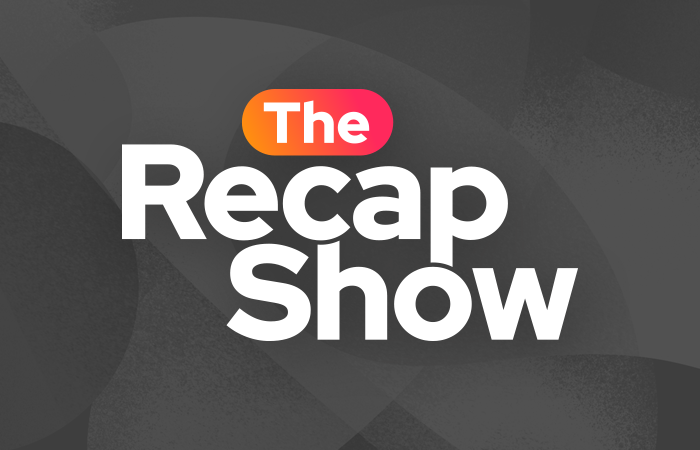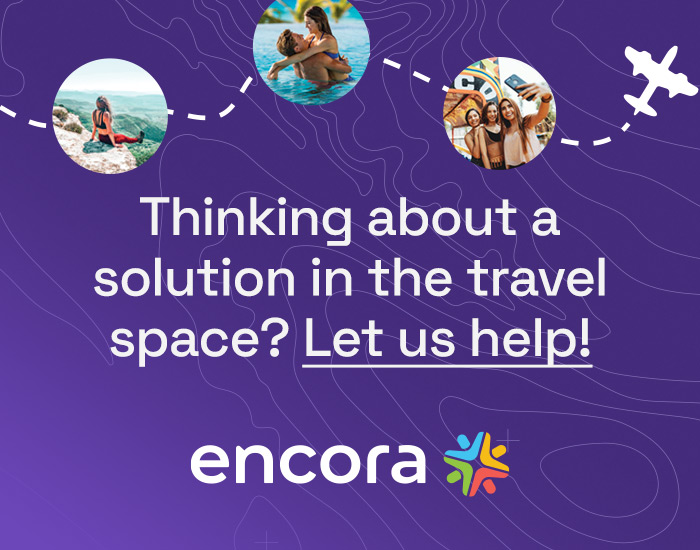Utpal Kaul, then Global Head of Innovation and New Product Incubation at CWT (formerly known as Carlson Wagonlit Travel), discusses the applications of Artificial Intelligence and other emerging technologies to improve traveler experiences, drive operational efficiency, and optimize travel spend.
In a time when nearly every conversation and vertical revolves around Artificial Intelligence, travel is no exception – which makes perfect sense since nearly every person travels at one point or another, whether it be for business or pleasure.
As an industry, travel is ripe with technological, and oftentimes fragmented, needs ranging from payment solutions, health and wellness, to sustainability. TMCs, or travel management companies, like CWT, are one solution to manage organizations’ business travel programs.
TMCs provide the end-user with online booking tools, mobile applications, program management, consulting teams and executive travel services, meetings and events support, reporting functionality, and more. A more personalized (and urgent) service example would be the rerouting of an employee who is traveling and happens to get stuck at an airport. When such situations arise – and are understandably not within the core competency of companies to resolve themselves – TMCs are especially useful for optimizing spending (and lessening stress!).
When it comes to travel and Artificial Intelligence, the ability to predict travel disruptions with a high degree of accuracy is just one game changer for a seamless experience. For example, knowing a day before the flight that it is most likely going to be delayed or cancelled, or that missing an onward connection is inevitable, now has a significant impact not only on the traveler’s experience but also on their decision to travel in the first place.
Artificial Intelligence’s ability to predict airfare volatility is impacting when travelers choose to book their travel too. AI empowers the user to make an informed decision on whether now is the right time to book or if they should wait a few days for better pricing. Even more impressive are the facial recognition capabilities that use biometrics as an access key, thereby eliminating the need to show proof of identity at every checkpoint.
With Technology and Artificial Intelligence Moving at a Rapid Pace, How Can TMCs Keep Up?
TMCs must find ways to be on the lookout for what is coming, and which technologies could disrupt the travel landscape of tomorrow. CWT takes an “all ideas are good ideas” approach followed by due diligence. They keep up with technology trends by collaborating with third parties and startups. CWT’s participation includes product testing, market fit determinations, and consultation. The criteria they use to determine whether a technology is considered worthwhile, innovative enough, or of value, is that it should:
- significantly improve the experience of the traveler,
- help drive operational efficiency, or
- significantly optimize travel spending.
CMT’s innovative capabilities do not come from collaboration with third parties and startups only, but from frequent interactions with their clients as well. By allowing their end users to know what is being worked on, presenting the metrics that accompany the project, and obtaining feedback – particularly on pain points – CMT is able to ensure product-market fit and offer the best, most innovative service possible.
With over 300 startups to review annually, what advice does Utpal have for those wishing to rise above the noise? First, startups looking to break into the travel and TMC industries must understand the problem they aim to solve before ever approaching organizations for partnerships. Second, they should already have a piece of technology built that solves said problem. Only after that can the review, feedback, and dialog begin.
The final piece of the innovation puzzle comes from within the organization itself. In CWT’s case they have a dedicated Innovation and New Product team which is headed by the CTO and supported by the CEO with frequent touchpoints to showcase projects and to provide feedback opportunities.
When to Buy or Build Technology
At any given point of time, there are a million things that a large organization could do, so determining what to buy, what to build and what to acquire can be tricky. Recognizing what you know and what you do not, and continuously researching via third parties or online via press releases are good places to start the resource prioritization journey.
Since no organization has unlimited resources for unlimited ideas, a product pipeline must be built. It is ideal to first consider what you have already committed resources to, how much more time it will take to complete, and how much else can be fit into the product roadmap.
But when it comes to testing, learning fast, and making a quick determination, the best way – the only way for CWT – is with a partner. CWT’s preferred partners are startups. Startups are nimble, they are hungry, they can iterate fast, and they are good at discovering new niches, disrupting, and innovating. The dynamic nature of working with startups allows CWT to run multiple products in parallel, to test quickly and to increase the odds of finding an innovative product that is scalable.
Utpal believes that such a third-party, startup innovation model can apply to companies outside of TMCs and the travel industry. Arguably it is the only sustainable model for any organization to drive innovation. This kind of “buy” approach frees companies from the risk of letting the time, money, effort, and passion spent on a project get in the way of the original problem it was trying to solve. The barrier to exit is a lot lower with an externally driven or an externally developed product than with an internally developed product. Results are not always black and white, but by using third parties it is easier to be impartial when determining what is working and what is not.
Similarly, the barrier to entry is also a lot lower when working with startups than when working internally. With internal products the approval process is much longer with more stakeholders, which inherently means process delays. At this slower pace, you run the risk of building a product when the product is already outdated. With startups you do not have such a limitation.
Of course, before licensing any product, the question that you should always ask is, “What is the value the product is going to bring?” Ascertaining what the relative value is in either having the product or not and what the options are helps in making the decision to move forward with a buy versus build.
How to Organize Third-Party Startup Innovation Efforts
At CWT, the third-party startup innovation efforts fall under the umbrella of the Product and Technology Group. But really for any organization such efforts could just as well fall under the Marketing umbrella. If you have executive sponsorship of the initiative, internal alliances will be forged. Therefore, it really does not matter where the initiative belongs because eventually everything rolls up to the top. On the other hand, without executive sponsorship it does not really matter how the initiative is structured because it would essentially be an academic exercise that does not drive value. Utpal’s advice is to obtain executive sponsorship first and foremost.
Based on Utpal’s personal experience, product people or engineers toying with the idea of a startup should spend a lot of time thinking through what the problem you are trying to solve is and how much of a value the solution you come up with represents. Test yourself and test your assumptions. Do not fall into the trap of believing that something you think is a problem is actually a problem. Finally, recognize that the devil is in the details. Do the due diligence of gathering domain expertise. And know that not all ideas that make sense on paper are workable. Laying domain expertise on top of ideas will go a long way.
Finding and Applying Artificial Intelligence and Emerging Technologies in Travel at a Glance
- Travel is ripe with technological, and oftentimes fragmented, needs ranging from payment solutions, health and wellness, to sustainability. TMCs, or travel management companies, are one solution to managing organizations’ business travel programs.
- In a time when every conversation and vertical revolves around Artificial Intelligence, travel is no exception. AI’s ability to predict weather and scheduling disruptions, pricing, and other volatile elements of travel, as well as the use of biometrics and facial recognition have had the most impact.
- One should move forward with a technology only if it improves the traveler experience, drives operational efficiency, and/or optimizes travel spend for clients.
- Large scale collaboration with startups allows organizations to run multiple products in parallel, to test quickly and to increase the odds of finding an innovative product that is scalable.
- Product people and engineers toying with the idea of a startup should spend a lot of time thinking through what the problem they are trying to solve is and how much of a value the solution they come up with represents. Knowing that not all ideas that make sense on paper are workable and laying domain expertise on top of them goes a long way.



